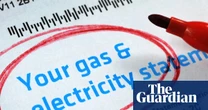Estate planning is the ultimate important but (seemingly) not urgent task. You’re not even going to be there when it becomes an urgent problem, so it’s very easy to put it off for another day, or month, or year, or decade.
It doesn’t help that most estate planning guides feel like the world’s most depressing to-do list—a to-do list with dire consequences if you get anything wrong.
Instead of pressuring yourself to find the best option, which often leads to analysis paralysis, just make sure you do the following things. Your heirs will thank you.
Step 1: Make a will
A whopping 68% of Americans currently have no will in place, according to a 2024 Caring.com survey. In other words, for the majority of Americans, the state of residence gets to decide the following:
- What happens to the deceased’s property. Generally this means property passes to a surviving spouse and children or other next of kin. The state will not leave anything to your friends who are found family, stepchildren or other family by marriage, godchildren, or your favorite charities.
- Who becomes guardian of the deceased’s minor children. If the deceased is the sole parent, the state has to make its best guess as to who would be the right guardian for the kids. This could mean your estranged sister could be responsible for raising your children, rather than the loving family friend who would be a better surrogate.
- Who will supervise the settlement of your estate. The state will appoint someone for this role who will be paid out of the proceeds of your estate.
What’s the least you need to do?
Take the time to write a will, even if you have to go through an online will template instead of consulting an estate attorney. The reputable online will services walk you through the process of writing your will and give you instructions on how to get your will witnessed and notarized.
Even if you have a more complex family situation or large estate, having a will created through a basic online template is better than having no will at all. (Just remember to double check that the online service is reputable and licensed in your state.)
Step 2: Think about how your plan could go wrong
Having a will (or even a complete estate plan) in place may seem like all you need to ensure your heirs receive what you want to leave them. But there are a number of ways that bad-faith actors—from manipulative family members to unscrupulous trustees—can get around your estate plan.
This underreported problem is called inheritance theft (or sometimes inheritance hijacking), and it seems to happen in nearly every family. While unethical people will always find a way to help themselves, many of us make it easier for them by refusing to think through what could go wrong after we die.
For instance, a family patriarch may leave everything to his son from his first marriage, but request a verbal agreement from the son that he will be financially responsible for his stepmother and three young stepsisters. It may not occur to the dying father that his son’s wife might have some strong opinions about the money—and effective strategies for manipulating her husband.
Assume that the people in your life will be the worst versions of themselves while they are grieving you, and write your will accordingly. You want to write your estate plan as if everyone is potentially untrustworthy.
If it’s too difficult to think of your loved ones that way, then imagine that everyone you know is just one traumatic brain injury away from acting completely out of character. Not only is this true, but it also removes any judgment from how you write your will. It’s not that you don’t trust your family to follow your wishes regarding your children from another marriage—it’s that you don’t trust anyone. Nor should you.
Step 3: Tell someone where to find your estate plan
About 12 years ago, I got a call from a friend whose father-in-law had just passed away. She asked if I had any ideas about where to look for his estate plan. My friend’s husband knew that his dad had made a will and maintained a life insurance policy, but he had no idea where to find any of the paperwork or even the names of the attorney or insurance company.
This is a common problem in a society that doesn’t like talking about death. We don’t want to burden our kids with morbid conversations, so we neglect to give them the information they need. Not telling your family where to find your estate planning documents means sending them on a horrible scavenger hunt when they’re already grieving.
Gather together all of your important documents in an emergency binder. (In my house, we call it the In Case I Croak book.)
You can start with nothing more than a copy of your will, life insurance policy, and retirement account information (since that money will also transfer to your heirs). But consider including additional information to your Croak book as you have time, like:
- Identification, including birth certificate, Social Security card, name-change paperwork, military service records, etc.
- Bank contact information, account types, and account numbers
- Creditor contact information, account numbers, and balances
- Copy of your most recent tax return
- Insurance company contact information, policy types, and policy numbers
Once you get your emergency binder started, leave it somewhere you will see it regularly to remind yourself to add to it as information passes through your hands. And either tell a loved one where to find your Croak book or leave clear instructions for where to find it.
Step 4: Update your beneficiaries
When my sister took her first job out of college in 1998, she made me the beneficiary of her 401(k) plan in the event that she passed away. I was still listed as beneficiary for many years, even after she met and married her spouse.
Forgetting to look back at who you have designated as beneficiary on your retirement plans or life insurance policies is the best way to thwart your own wishes. That’s because the law specifies that assets are distributed according to beneficiary designation rather than your will. No matter what you state in your will, the beneficiary designation overrides it.
Make a list of any assets you have with a beneficiary designation. These might include:
- Retirement accounts, such as 401(k)s, 403(b)s, 457s, IRAs, and pension plans
- Financial accounts, such as brokerage accounts, money market accounts, checking and savings accounts, CDs, and bonds
- Insurance products, including life insurance policies and annuities
- Employee compensation plans, including stock options, bonus plans, employee stock purchase plans, and deferred compensation plans
Check the beneficiaries as you gather this list, then set up a regular biannual Google calendar reminder to look over the information.
The bare minimum is way better than nothing
Estate planning and inheritance will always be a messy, emotional, and onerous process—and there are myriad ways to screw things up for your heirs.
But you don’t need a perfect estate plan to protect your loved ones. You just need to start with the bare minimum: Write a will. Avoid placing too much trust in anyone. Put together a findable emergency binder. And regularly update your beneficiaries.
Don’t let the perfect estate plan in your head be the enemy of the completed estate plan that will actually be there for your family.










No comments